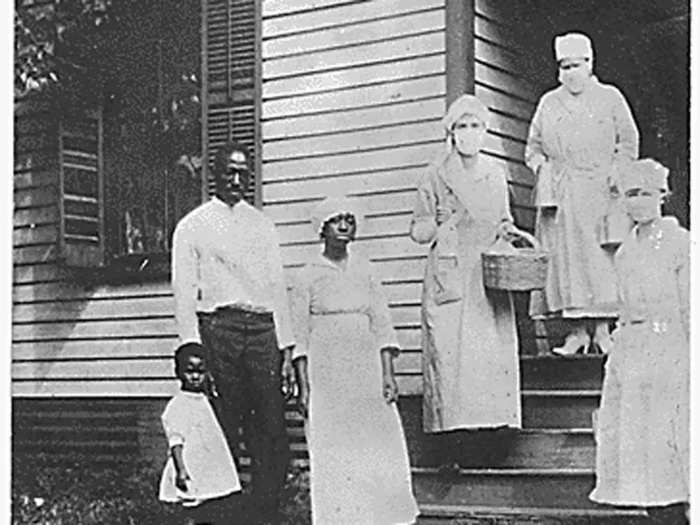- Home
- slideshows
- miscellaneous
- Photos show how the 1918 flu pandemic brought the world to its knees
Photos show how the 1918 flu pandemic brought the world to its knees
There is no universal consensus regarding the origins of the H1N1 influenza virus, but some have pointed to the pandemic beginning in France, China, or the US.

The first confirmed case of the virus in the US occurred in the spring of 1918, at an army camp in Fort Riley, Kansas. Two weeks later, 1,100 soldiers were admitted to a hospital, and thousands were sick in barracks. At that time, 38 soldiers died.
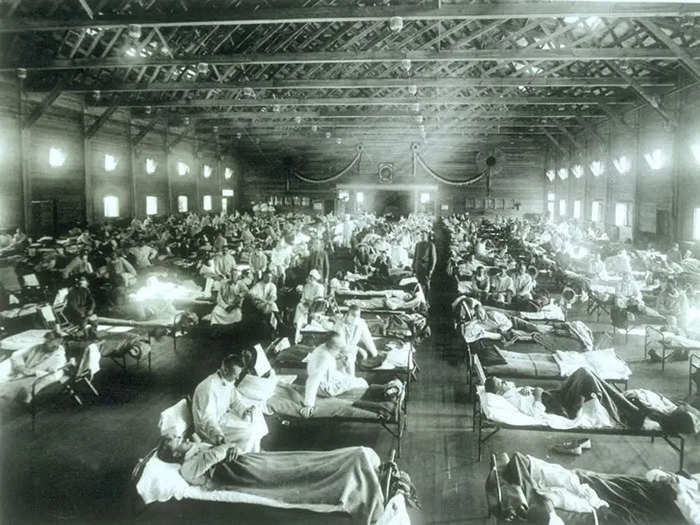
Sources: PBS, Smithsonian Magazine
The first strain of the flu was originally called "the three-day fever" and was typically described as a heavy cold. Although the flu spread around the world in just a few weeks, it seemed to have died down by the end of the summer.
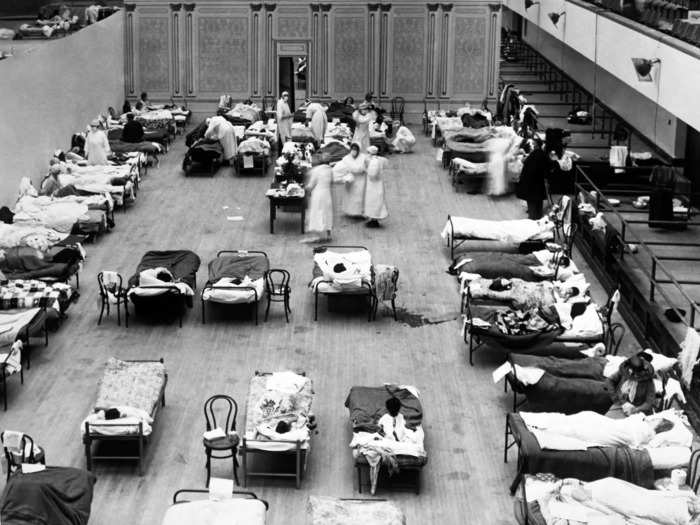
Source: PBS, Popular Mechanics
But a new strain of the flu virus emerged in the fall, and this time it was significantly more dangerous. The virus took the world by storm, killing victims in just a couple of days.

Source: PBS, Popular Mechanics
By the first week of September, an average of 100 people died per day at an army camp in Massachusetts. "We have lost an outrageous number of Nurses and Drs., and the little town of Ayer is a sight," wrote one of the camp's doctors.

Source: Popular Mechanics
The symptoms of the Spanish flu were particularly frightening. Beginning with the ears, the victim's face would begin to turn blue as oxygen was deprived. A bloody liquid would begin to fill the victim's lungs until the victim would suffocate and die.

Source: Popular Mechanics
Doctors worked desperately to discover the nature of this strange new disease. They were shocked to discover that it was a variation of influenza.
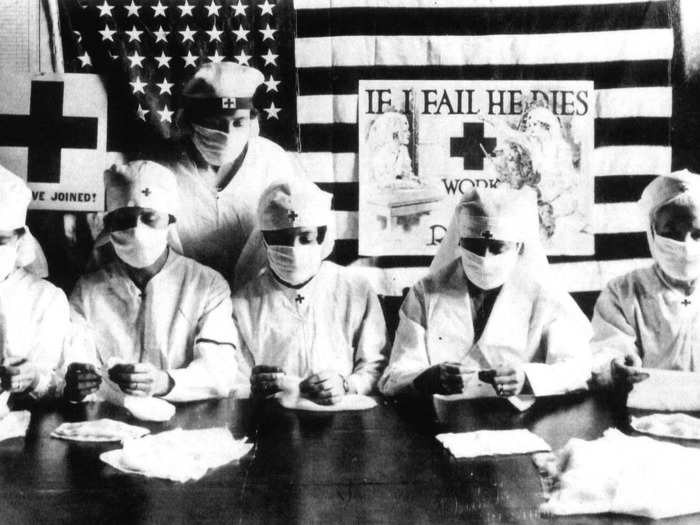
Source: PBS
At the time there was no vaccine to prevent the spread of the virus, and no antibiotics to treat secondary infections, so authorities resorted to non-medicinal interventions including quarantines, isolation, and increased sanitation.
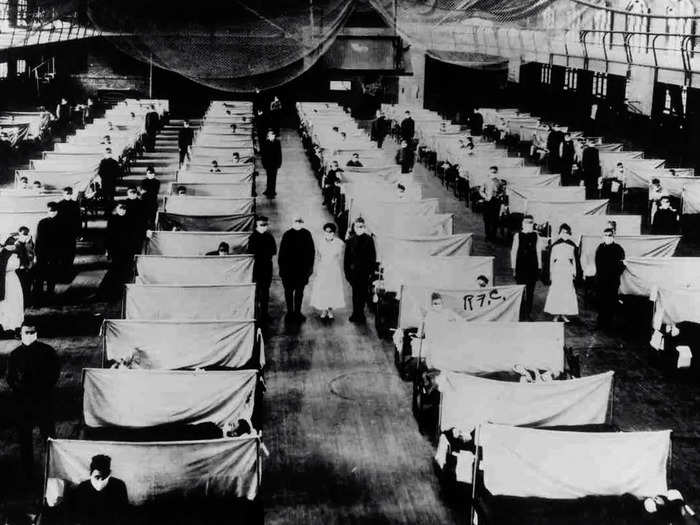
Source: CDC
A poster by the United States Public Health Service warned Americans how to protect themselves against spread of the disease.
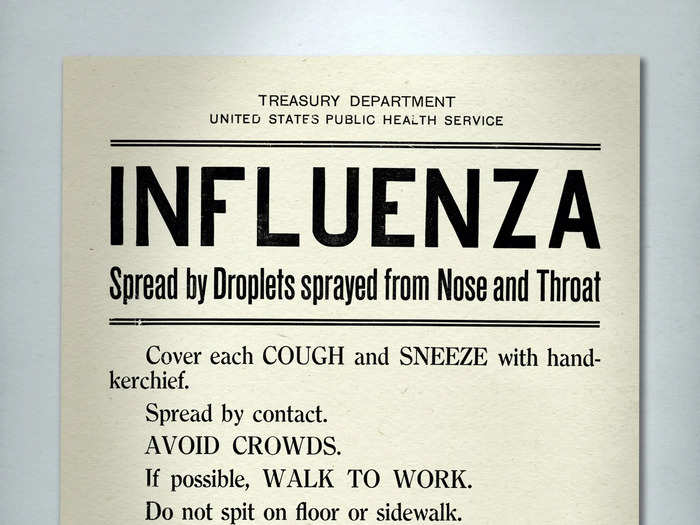
As officials attempted to deal with the overwhelming number of sick people across the country, Red Cross demonstrations were held. During the pandemic, 25% of Americans would contract the flu and 675,000 would die.
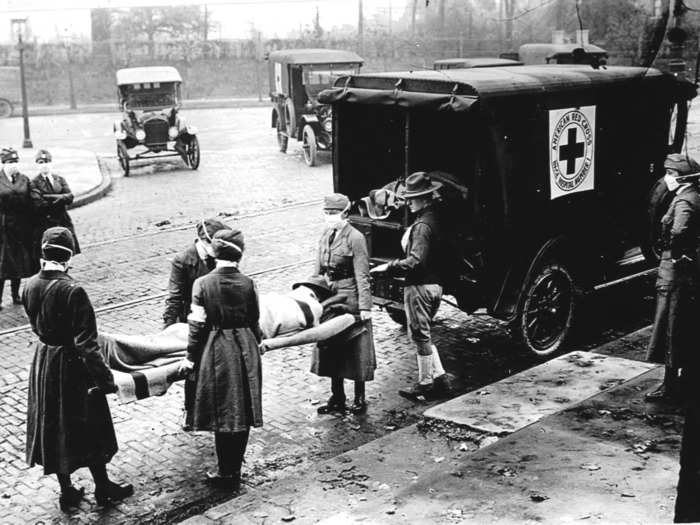
Source: Popular Mechanics, CDC
But often, nurses and doctors were so overwhelmed by the number of sick people that they didn't have time to do anything for patients except give them some whiskey and attempt to make them comfortable.
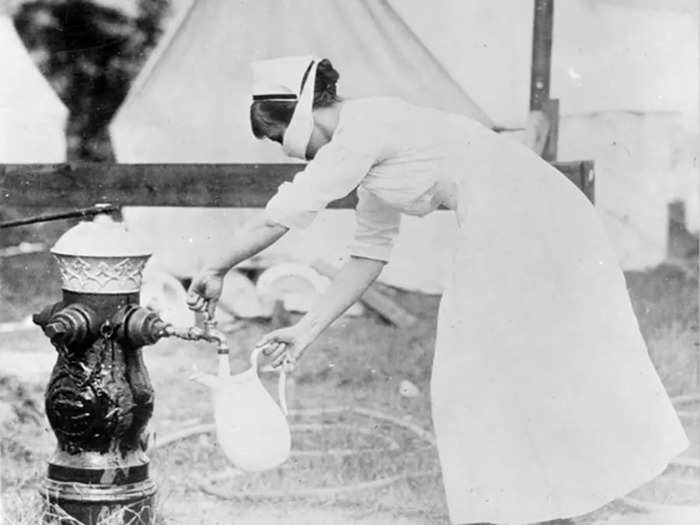
Source: Popular Mechanics
In October 1918, the pandemic was at its worst, killing 195,000 Americans alone. The situation became so dire that caskets began to run out and some cities even banned funerals to prevent further spread of the virus.
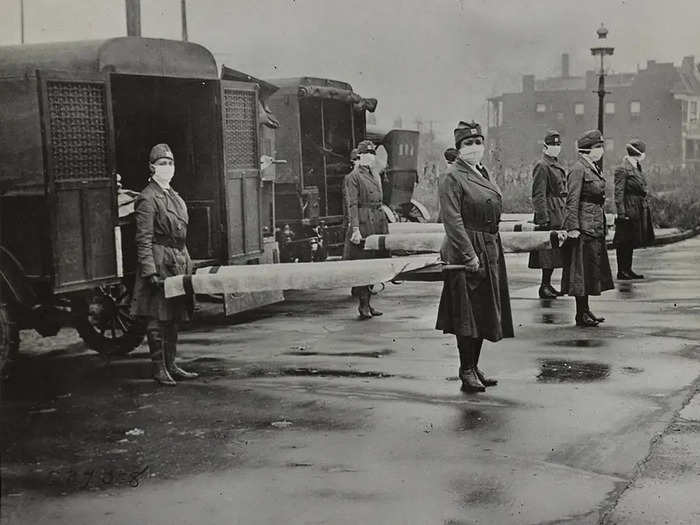
Source: Popular Mechanics
Panicked cities began to require that citizens wear masks to hinder the alarming spread of the virus. New York City was hit particularly bad, with 851 people dying from the flu in one day alone.
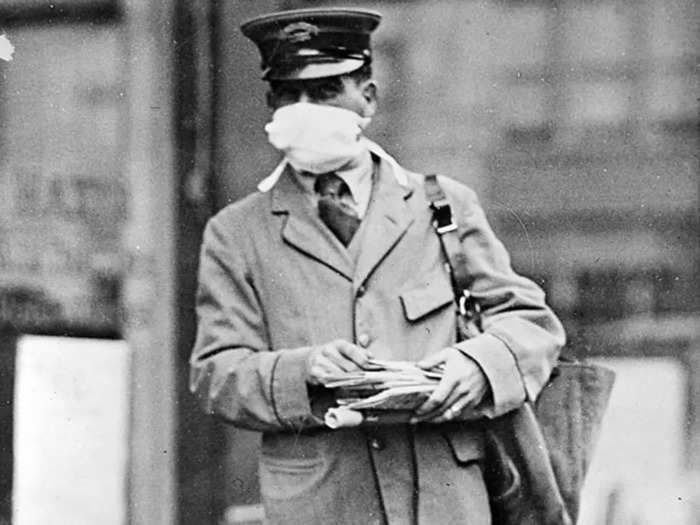
Source: Popular Mechanics
Cities were put on lockdown for weeks at a time as local governments closed theaters, schools, and churches to stop the flu from spreading.
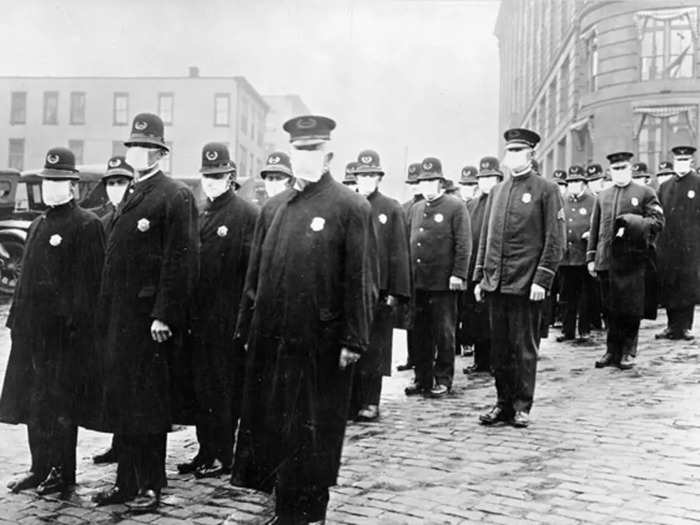
Source: Popular Mechanics
One cautionary jingle of the time reminded Americans to "Obey the laws, and wear the gauze, protect your jaws, from septic paws."
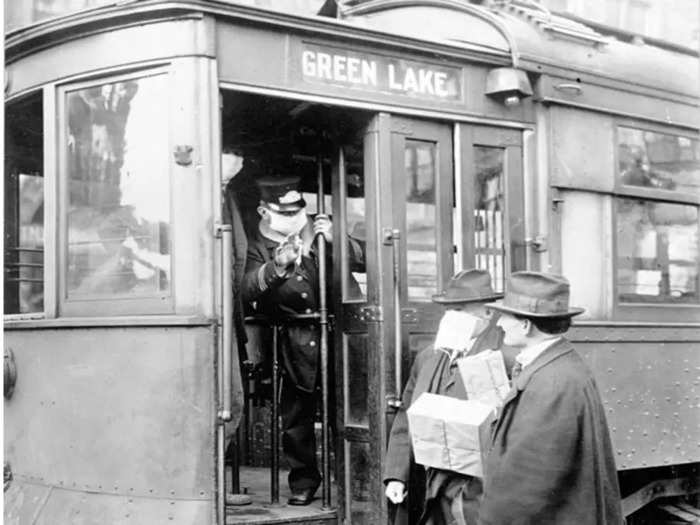
Source: Popular Mechanics
This typist shows that masks weren't just for outdoors either. Authorities advised that masks be worn at all times. Despite the precautions, the flu pandemic lowered the life expectancy by 12 years in the US in just one year.
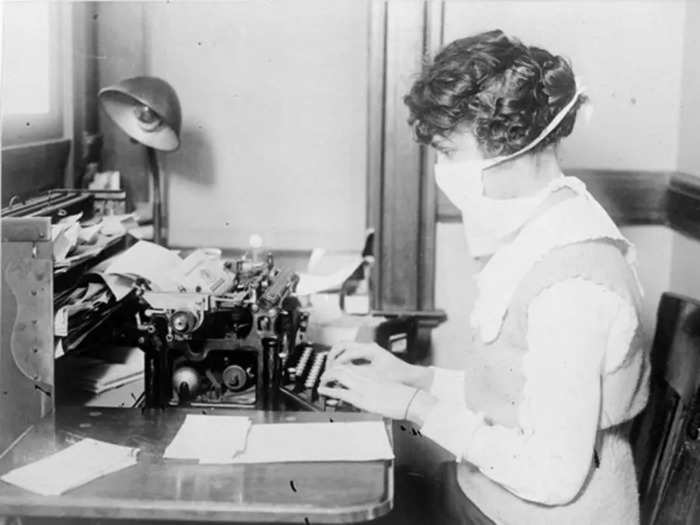
Source: National Archives, Popular Mechanics
American soldiers even wore masks as they watched a boxing match aboard the USS Siboney. WWI increased the spread of the virus as soldiers traveled from country to country, bringing the flu with them.
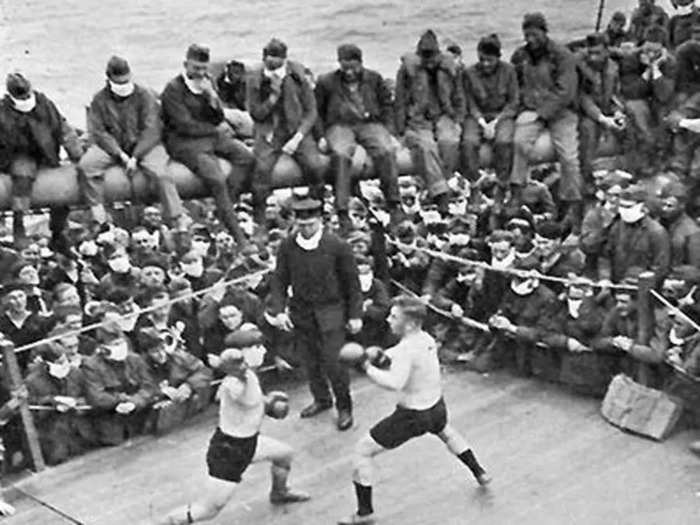
Source: PBS
By the end of 1918, 57,000 American troops died from the flu, compared to the 53,000 who died in combat.
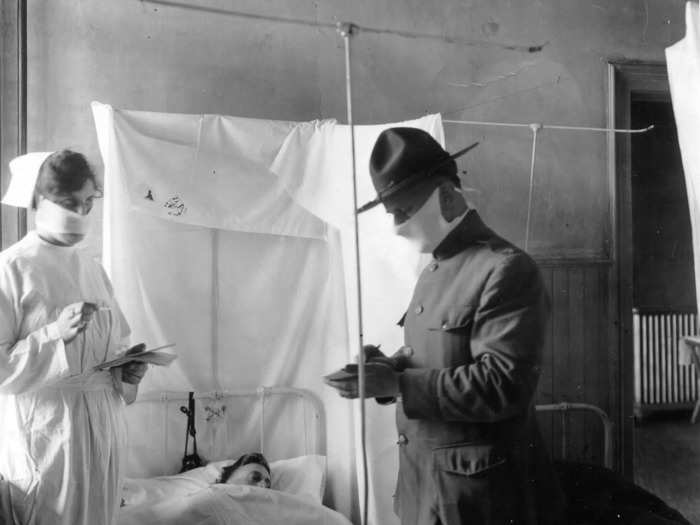
Source: Popular Mechanics
No part of the world was safe from the pandemic. Even a tiny ocean-side village in Alaska was affected. During five days in November, the flu killed 72 of its 80 adult inhabitants.
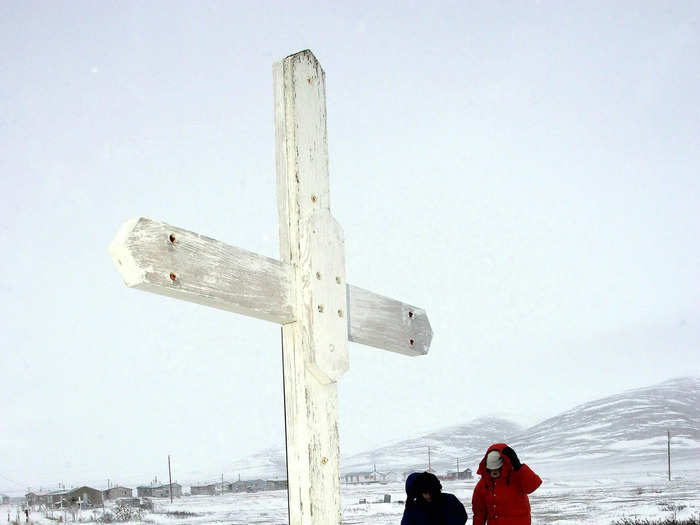
Source: CDC
While most flu viruses target the young and old, the majority of those who died from the Spanish Flu were between 20 and 40 years old. The strong immune systems of the healthy would overreact in an attempt to fight the virus and end up ravaging the lungs.
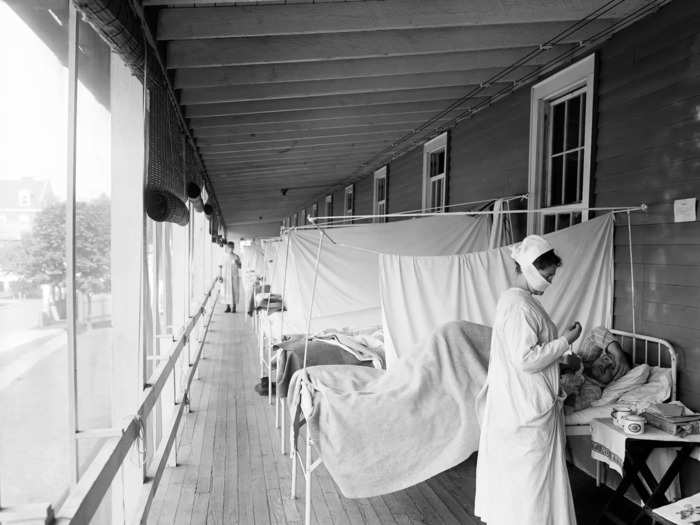
Source: Popular Mechanics
Every corner of the globe and every major city was hit by the virus in just a matter of weeks. Between 50 million and 100 million people around the world died from the Spanish flu.

Source: CDC
The pandemic only lasted 15 months, but the virus infected an estimated 500 million people worldwide. The global population was 1.8 billion people in 1918.
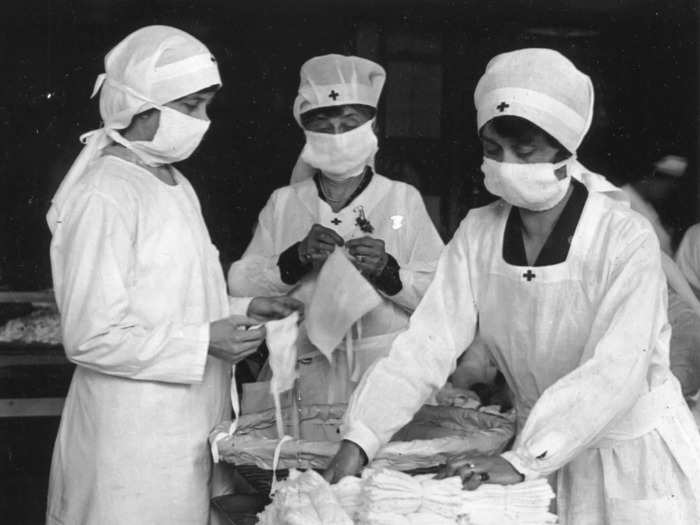
Source: National Archives, Smithsonian Magazine, CDC
The influenza pandemic remained a mystery for nearly 80 years. But researchers in the 2000s successfully isolated, decoded, and replicated the entire sequence of the virus, now known as H1N1.
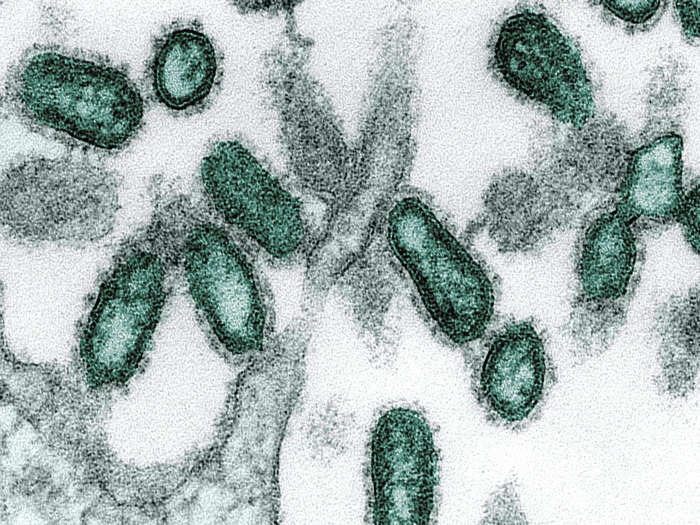
Source: CDC
At that time, it was discovered that the virus originated from an avian strain. The H1N1 virus previously only affected birds, but in 1918, it developed the ability to jump to humans and spread rapidly.
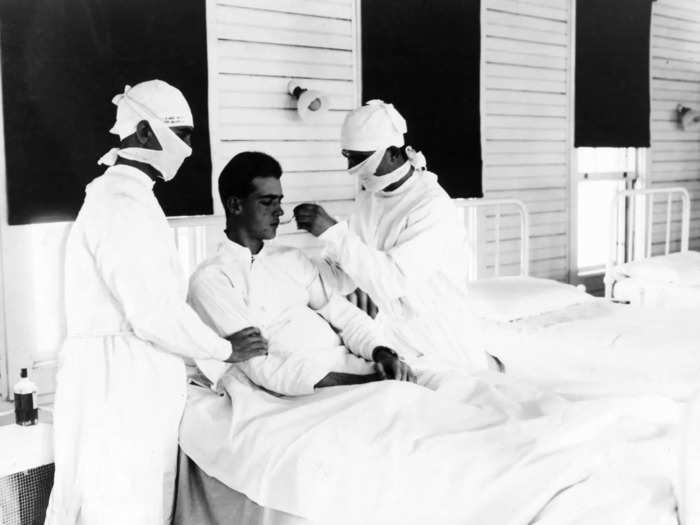
Source: Popular Mechanics
Today, an outbreak of the novel coronavirus has caused fear that another pandemic could occur. The novel coronavirus that originated in Wuhan, China, and has now spread to at least 51 other countries, killed 2,800 people, and infected 83,000.
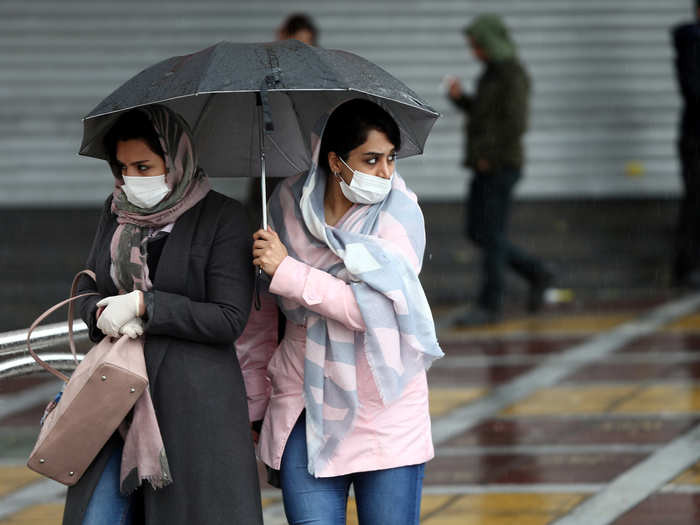
Source: Business Insider
The scale of the coronavirus, which causes the disease COVID-19, has drawn comparisons to the 1918 flu pandemic. The World Health Organization considers the outbreak an international public health emergency that has "pandemic potential."

Source: Business Insider
Popular Right Now
Popular Keywords
Advertisement
